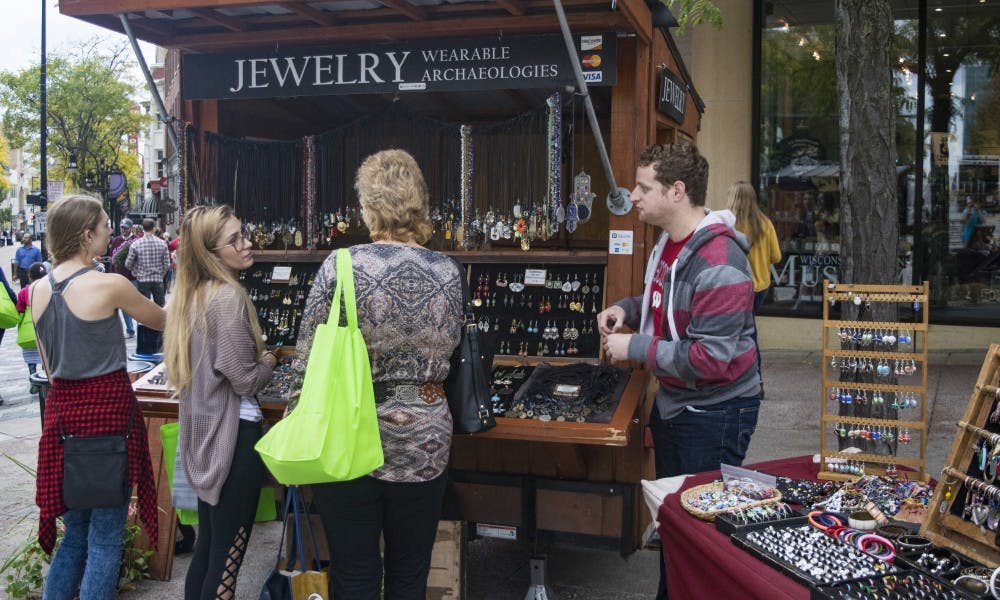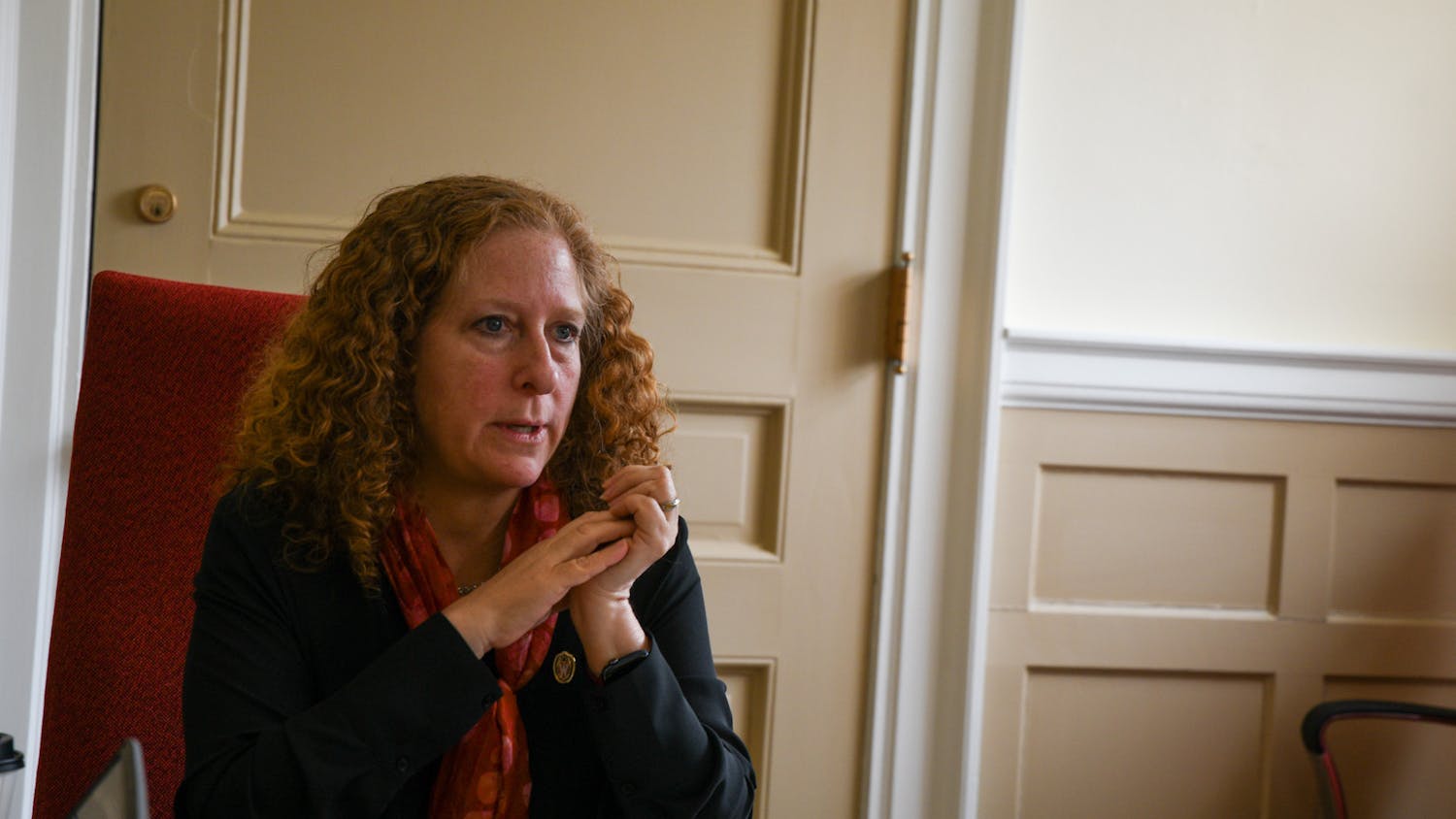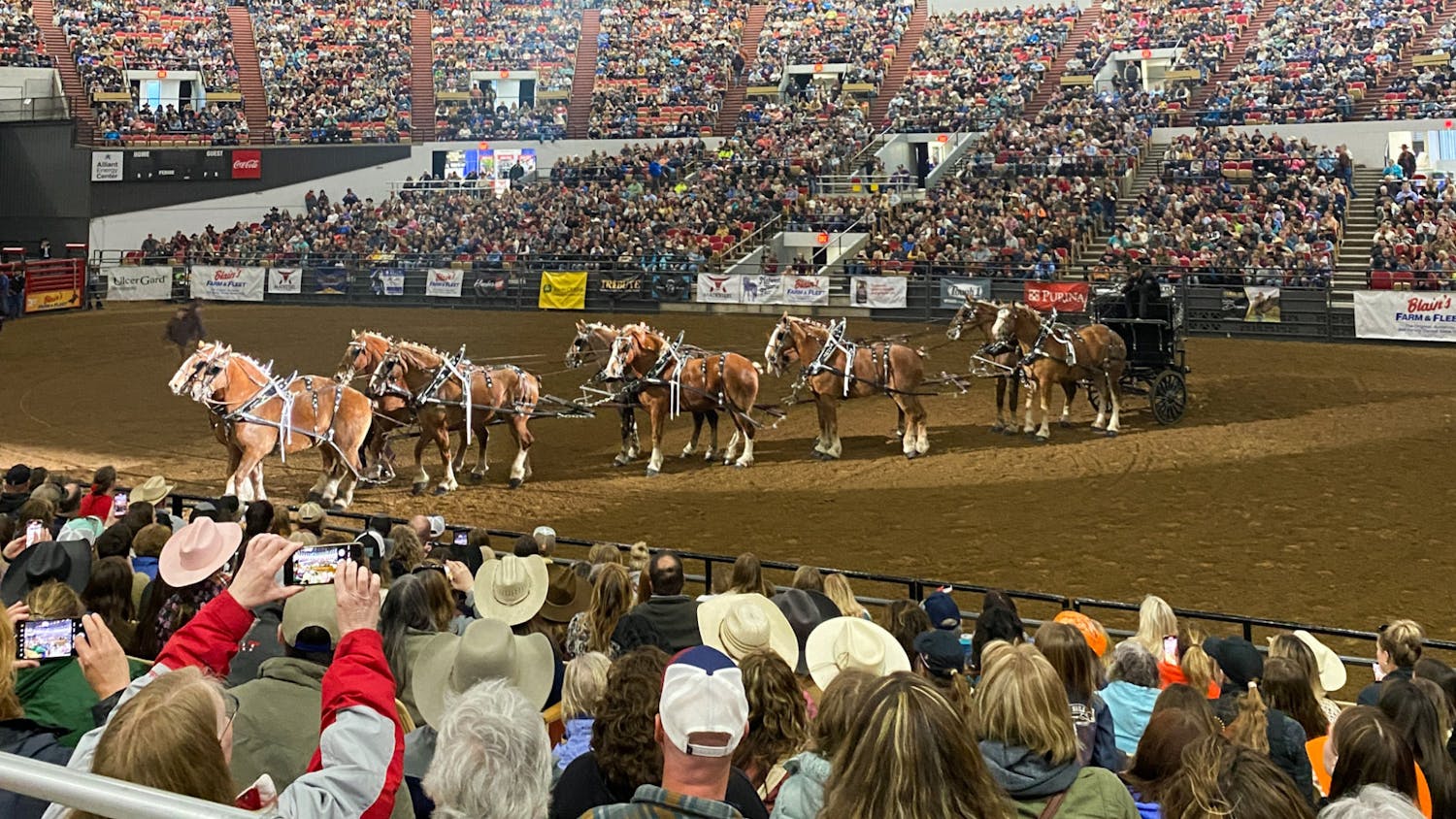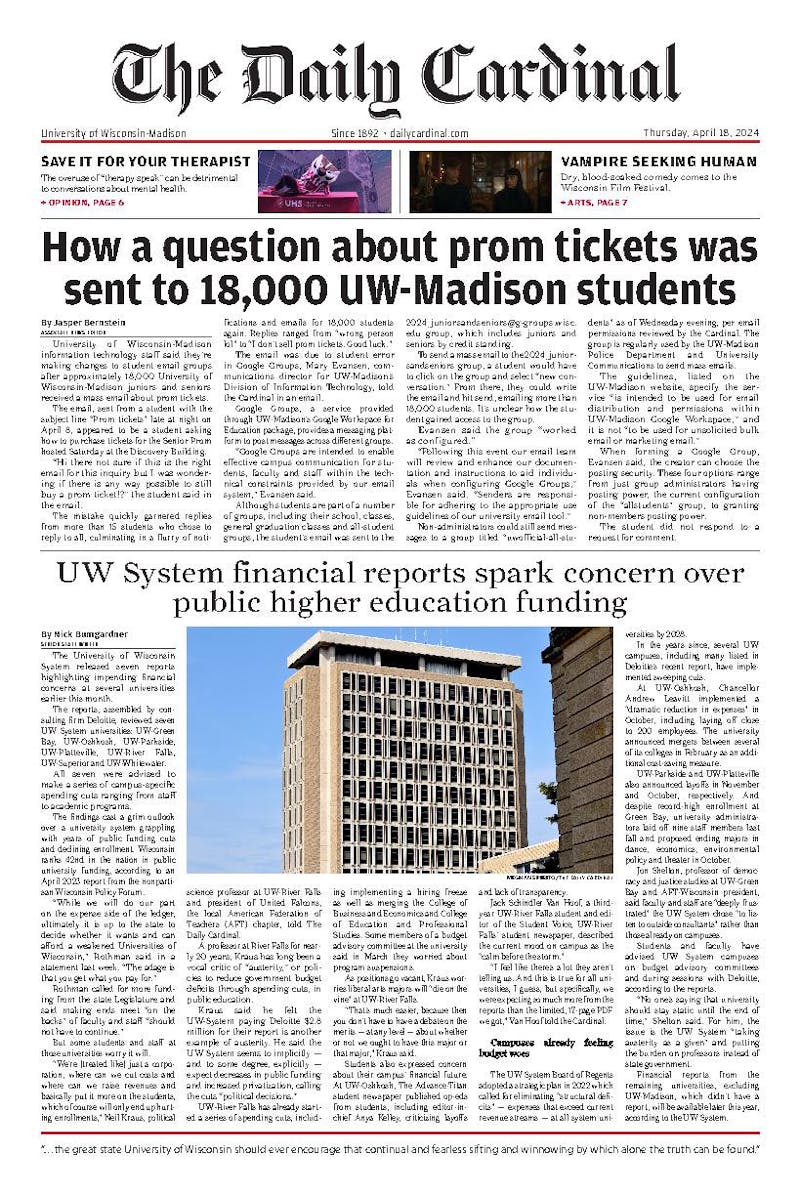It’s a Saturday morning in early October. Any glimpse of the summer sunshine is slowly fading, occasionally peeking out from behind the clouds and radiating warmth on your skin. With a bag of vegetables in your left hand and a loaf of Stella’s Bakery cheese bread in your right, you look on the Capitol Square grass and see nothing less than AcroYoga, running toddlers and couples on brunch dates.
Many UW-Madison students can relate to this euphoria if they’ve visited the Dane County Farmers’ Market.
What one can understand about the market, however, is usually limited to personal observations while strolling around. But those involved with the market, including Alfonso Morales, Sarah Elliott, Josh Lubenau and Jacob Hellman, understand the market’s inner workings — how one gets a booth as well as the benefits the market has on the community.
Farmers’ markets were generally “a response by white middle-class consumers to remember where their food came from,” said Morales, a UW-Madison professor of urban and regional planning. When grocery stores’ popularity increased in the 1920s and ‘30s, the number of markets and street vendors decreased.
Morales said eventually, consumers came to question the produce in grocery stores, wondering, “Why do we only get two types of tomatoes? Why don’t they taste like what I remember my grandparents’ tomatoes to taste like when I was a kid?” In Madison in 1972, the Dane County Farmers’ Market began.
Typically, he said, markets are a substitute for grocery stores, where you would spend that money otherwise. And because one doesn’t necessarily have more money to spend on market produce instead of grocery goods, there is no direct growth of the economy.
Yet, Morales said, “There is probably a net gain [for the community]. It’s a big tourist thing, something to brag about, socially, [in the] community, politically and more.”
Waiting for desired Saturday on the Square market spot
Although one might assume getting a booth at the market is difficult, Dane County Farmers’ Market Manager Sarah Elliott says that “competitive” isn’t the right word. Rather, a booth permit is “desirable” because it attracts such a large customer base and is a year-round market.
Though it is not “competitive,” she said hopeful vendors can sit on a waitlist for two to four years. Once current members choose to give up their booth at the market, those near the top of the list are invited to join the community.
Vendors are not chosen subjectively to be added to or suspended from the market community. They only have to follow rules — such as selling only their merchandise.
Josh Lubenau, an herb vendor at the Saturday market, agreed that it’s not tough to get a booth. It cost $25 to be on the waitlist — which Lubenau was on for three years. After he was accepted, he wasn’t permitted to sell during the peak summer season during the first year or two of his membership, only during the spring and fall.
City vendors feel part of the Market community
While not part of the Dane County Farmers’ Market, there are more vendors that occupy the city-owned space across the street from the Capitol. Artists are able to sell their merchandise here by acquiring an art license by the city of Madison.
Jewelry designer Hanna Bettner, who owns the booth Wearable Archaeologies, said she finds this space to be competitive.
She reflected on her time as a vendor since 1985 — on the fact that there is also a waiting list for the artists, and even once off of the waiting list it can be difficult for new artists to get a profitable location with pedestrian traffic.
But Bettner’s seniority lands her a consistent space on the corner of State Street and E. Mifflin Street, a popular site.
“I’m very fortunate I can just pull in, put my cart there, and know exactly where I’m going to be. That’s a real advantage,” Bettner explained. Newer vendors are forced to wait longer to pick their space for the day.
Markets provides income for vendors, pleasure for community
With 32 years under her belt, Bettner said she loves what she does.
“I love this business, I love recycling, I love socializing. It’s joy with a sense of humor. I love the university, I love Madison,” Bettner said.“It adds up to a great experience.”
Jacob Hellman, a
He met his boss, Bettner, through a series of connections and side jobs, and they developed a friendship.
“If you love your job, you don’t really see it as a job anymore,” Hellman said.
For Hellman, interacting with customers and sometimes bargaining if he wants to make a sale is the fun of the freedom of the market.
“In this day [and] age when everything is owned by two or three corporations — it’s refreshing,” he said. “Saturday on the Square is such a Madison institution, such a Madison thing that people from all over the state and all over the country come for.”
He also added that people are always happy, rain or shine, pointing out, “I’ve never seen anyone mad while holding cheese bread.”
UPDATE Oct. 19, 2017 at 8 p.m.: This article was corrected to reflect that the Farmer's Market vendors go through a different process than jewelry vendors across from the capitol square to get a permit and Morales's comments were about the general history of farmers markets not the Madison Farmer's Market. Additionally, Sarah Elliott's name has been corrected and the cost to be on the waitlist has been corrected from $50 to $25. The Daily Cardinal regrets these errors.






